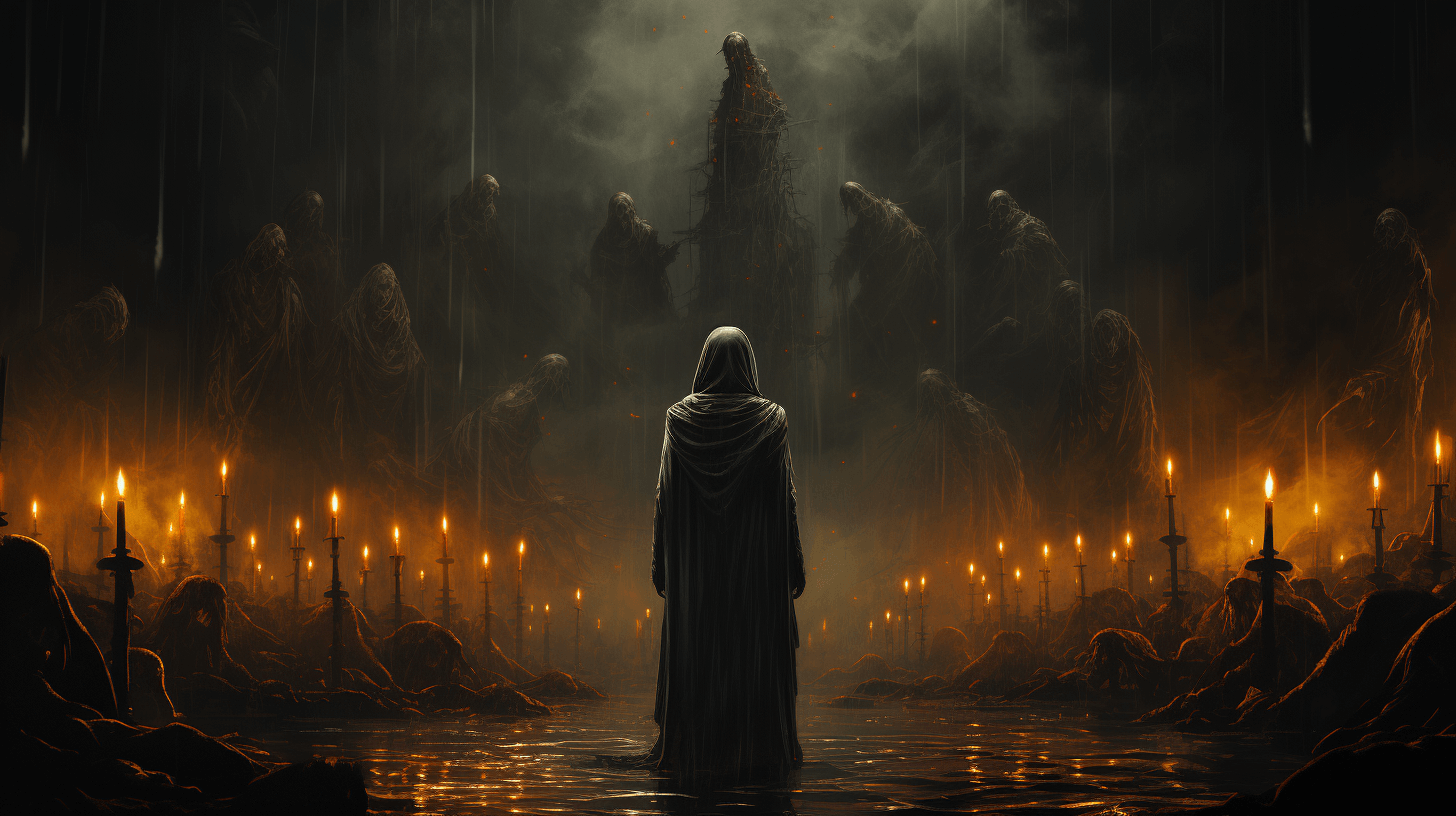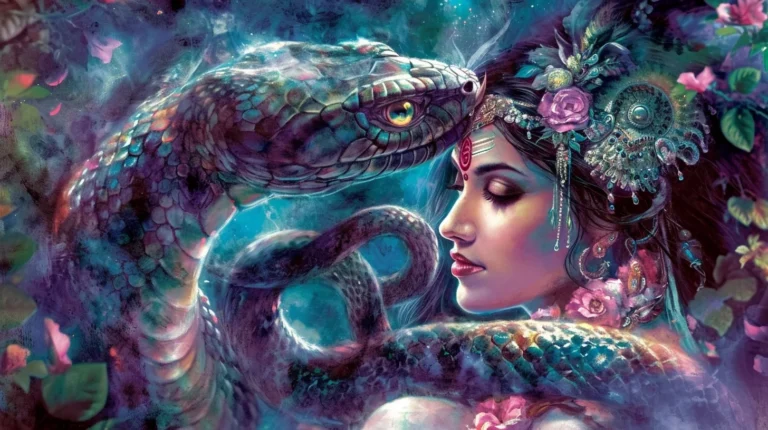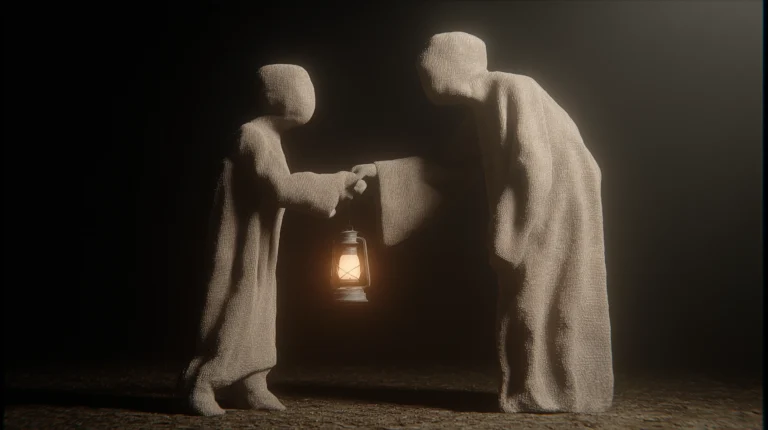Stare Down Your Demons and Conquer Them
In the vast landscape of human existence, one quest remains a consistent endeavor across cultures, religions, and philosophies – the quest for self-mastery. Defined as the ability to control one’s own desires, emotions, and actions, self-mastery is a journey into the deepest corners of the human mind, spirit, and psyche. It’s about facing, understanding, and integrating the parts of ourselves that we may find challenging, frightening, or even shameful – what we often term as our ‘demons’.
In “Stare Down Your Demons and Conquer Them: A Psychological and Esoteric Guide to Self-Mastery”, we will explore the multifaceted nature of self-mastery through a fusion of various disciplines: psychology, philosophy, esotericism, symbolism, and the archetypal hero’s journey.
Our demons, in this context, are not literal supernatural entities but metaphors for the internal struggles, fears, insecurities, and past traumas that often hold us back from achieving our full potential. They are the parts of ourselves that we tend to hide, suppress, or deny, residing in the shadowy corners of our consciousness.
Understanding and facing these demons is a crucial step towards self-mastery. It is a journey not without challenges, often demanding us to step out of our comfort zones and face our deepest fears. It is, however, a journey equally filled with profound wisdom, personal growth, and transformative experiences.
Through psychology, we will understand the nature of these internal demons and learn practical techniques to confront and conquer them. Through philosophy, we will gain a deeper understanding of our existence, purpose, and the nature of our struggles.
The esoteric wisdom and teachings of Hermeticism will provide a mystical lens through which we can view and address these challenges, while the art of alchemy will serve as a metaphor for our inner transformation. We will decipher the symbols that have been used throughout history to represent this inner battle and transformation.
Finally, we will embark on the timeless path of the hero’s journey, facing our shadows, experiencing our own death and rebirth, and returning transformed with the elixir of self-knowledge and personal empowerment.
This book is more than a guide; it is an invitation. An invitation to embark on the most rewarding journey of your life, a journey within. So, take a deep breath, gather your courage, and prepare to stare down your demons and conquer them. It is time to undertake the quest for self-mastery.
Chapter 1:
Introduction to Self-Mastery

Self-mastery is a term that, while having roots in ancient philosophies and spiritual traditions, remains powerfully relevant to our modern lives. But what exactly do we mean by self-mastery, and why is it of such significant importance? In this chapter, we will delve into defining self-mastery and understanding its role in our lives. We’ll also examine how it intertwines with various disciplines like psychology, philosophy, esotericism, hermeticism, alchemy, symbolism, and the hero’s journey.
Defining Self-Mastery
Self-mastery can be defined as the process of achieving control over one’s own mind, body, and spirit. It is a state of inner strength and self-discipline that allows a person to act in accordance with their highest values, aspirations, and principles, instead of being driven by transient emotions, desires, or external pressures.
However, self-mastery is not about repression or denial of our thoughts, feelings, or desires. Rather, it’s about understanding and integrating all aspects of our being, including our fears, insecurities, and the parts we often term as our ‘demons’.
The Importance of Self-Mastery
The significance of self-mastery lies in its ability to cultivate personal freedom and self-determination. By mastering our inner world, we gain the ability to respond to life’s challenges with equanimity, resilience, and wisdom, rather than reacting impulsively or defensively. It empowers us to break free from the limitations and patterns that inhibit personal growth and fulfillment.
Furthermore, self-mastery enhances our relationship with ourselves and others. It fosters self-respect, self-confidence, and a deep sense of inner peace. When we are in control of our minds, emotions, and actions, we can navigate relationships and situations with greater compassion, understanding, and skill.
Self-Mastery: A Multidisciplinary Approach
Self-mastery is a journey that can be approached from various perspectives. Here, we weave together the threads of psychology, philosophy, esotericism, hermeticism, alchemy, symbolism, and the hero’s journey to create a rich, multi-faceted map for this transformative journey.
1. Psychology
Psychology offers us the tools to understand the human mind, our emotions, behaviors, and the subconscious ‘demons’ that often guide our actions without our conscious awareness. By applying psychological principles, we can gain insights into our inner world and learn practical techniques to foster self-mastery.
2. Philosophy
Philosophy, on the other hand, provides a framework for understanding the purpose of life, the nature of existence, and our place in the world. Different philosophical schools have their unique approaches to self-mastery, encouraging us to ask deep, fundamental questions about ourselves and our lives.
3. Esotericism and Hermeticism
Esotericism and Hermeticism represent a mystical path to self-mastery. These ancient wisdom traditions provide a different, more symbolic, and intuitive approach to understanding ourselves. They teach us about the microcosm and the macrocosm, the principle of correspondence (“As above, so below”), and the process of spiritual alchemy.
4. Alchemy
Alchemy itself, often misunderstood as merely an antiquated pursuit to turn base metals into gold, is a rich symbolic language representing the transformation of the human spirit. This alchemical transformation, or the ‘Great Work,’ serves as a metaphor for our journey to self-mastery.
5. Symbolism
Symbolism is a universal language that allows us to communicate and understand deep truths about the human experience. Throughout our journey to self-mastery, we’ll encounter various symbols that represent different stages, struggles, and achievements on this path.
6. Hero’s Journey
Finally, the hero’s journey is a universal narrative pattern that echoes the process of self-mastery. It outlines a transformative journey, where the hero ventures into the unknown, confronts and overcomes challenges (or ‘demons’), and returns changed, often bearing some form of wisdom or elixir. This archetypal journey mirrors our own path to self-mastery, offering us a narrative structure that can help guide our way.
By interlacing these various disciplines, we aim to provide a comprehensive guide to self-mastery that recognizes the complexity of the human experience. As we progress through this book, you will embark on a journey that is as challenging as it is rewarding – a journey to stare down your demons, conquer them, and achieve the profound transformation that is self-mastery.
Chapter 2:
Identifying Your Demons

One of the fundamental steps towards self-mastery is understanding and identifying your ‘demons’. These personal demons, metaphorically speaking, are the internal obstacles, fears, or challenges that hinder your personal growth and self-actualization. In this chapter, we will discuss how to recognize these challenges and delve into the psychological concepts that underpin them.
Recognizing Your Demons
Identifying your personal demons can often be a challenging process as these issues might be hidden deep within your subconscious mind. However, there are common indicators that might help you recognize these internal challenges.
1. Recurrent Patterns:
Repeating patterns of behavior, particularly those that lead to negative outcomes or feelings, often signal underlying personal issues. For example, if you constantly find yourself in toxic relationships or jobs you despise, it might indicate a deeper, unresolved issue that needs attention.
2. Intense Emotional Reactions:
If you notice overly intense emotional reactions to specific situations, it might be a sign of an underlying demon. These could manifest as irrational fears, uncontrollable anger, or intense anxiety.
3. Avoidance Behavior:
If there’s something you’re constantly avoiding or running away from, it could be a sign of a personal demon. This could be avoiding certain situations, people, or even thoughts and feelings.
4. Recurrent Dreams or Nightmares:
Our subconscious often communicates with us through dreams. If you experience recurrent dreams or nightmares, they might be hinting at deeper issues that need to be addressed.
Understanding the Psychological Concepts Behind ‘Demons’
In psychological terms, our personal demons often relate to our ‘shadow selves’ – a concept introduced by Swiss psychiatrist Carl Jung. The shadow self is the unconscious part of the personality which the conscious ego doesn’t identify with. It often comprises of aspects of ourselves that we reject or deem unacceptable such as certain emotions, desires, fears, or past traumas.
When left unaddressed, these shadow aspects can influence our thoughts, emotions, and behaviors in ways we aren’t consciously aware of. They might lead us to act out, make poor decisions, or repeat destructive patterns. By identifying these ‘demons’, bringing them into our conscious awareness, and dealing with them appropriately, we begin the process of self-mastery.
Identifying and understanding our demons is not a process that happens overnight. It takes patience, honesty, and a willingness to explore the hidden corners of our minds. It might be challenging and at times uncomfortable, but it is an essential step towards self-mastery. Remember, the journey to conquering our demons begins with recognizing and understanding them. The subsequent chapters will guide you through strategies and techniques to confront and integrate these aspects, facilitating your journey towards self-mastery.
Chapter 3:
The Psychology of Demons

Understanding the psychology behind our personal demons deepens our insight into how they impact our thoughts, behaviors, and overall well-being. To navigate this journey towards self-mastery effectively, we must become familiar with some fundamental psychological theories and concepts that relate to our internal struggles. In this chapter, we will explore the notions of the unconscious mind, shadow selves, and cognitive dissonance, and how they play into our understanding of personal demons.
The Unconscious Mind
Sigmund Freud, the father of psychoanalysis, proposed that our mind is like an iceberg. The tip of the iceberg that is visible above the water represents our conscious mind – the thoughts, memories, feelings, and desires we are aware of. But underneath the surface lies a vast realm of our unconscious mind, holding thoughts, memories, desires, and experiences that have been repressed or forgotten.
These unconscious contents, while out of our direct awareness, significantly influence our behaviors, decisions, and emotions. Our personal demons often reside here, subtly shaping our reactions and patterns until we shine the light of conscious awareness upon them and integrate them into our whole self.
Shadow Selves
Building upon Freud’s work, Carl Jung further explored the unconscious mind and introduced the concept of the ‘Shadow Self.’ This shadow represents the parts of our personality that we don’t consciously identify with. These could be aspects we consider negative, like anger, jealousy, or fear, or even positive traits that we deny in ourselves due to various reasons, like societal expectations or personal beliefs.
Our shadow selves can become our personal demons when left unexplored and unacknowledged. They can drive our actions and create internal conflicts, leading to patterns of self-sabotage, unfulfilled potential, and unexplained emotional reactions.
Cognitive Dissonance
Another critical concept in understanding our personal demons is cognitive dissonance, a term introduced by social psychologist Leon Festinger. Cognitive dissonance refers to the mental discomfort experienced when we hold two or more contradictory beliefs, values, or attitudes. This discomfort often leads us to ignore or deny certain aspects of reality to maintain internal consistency.
For instance, if a person values honesty but frequently finds themselves lying, they might experience cognitive dissonance. To alleviate this discomfort, they may deny or justify their lying behavior, thus creating a personal ‘demon’ that impedes their growth and integrity.
Understanding the unconscious mind, shadow selves, and cognitive dissonance helps us comprehend the roots of our personal demons and how they influence our lives. These theories underscore the importance of bringing these demons into our conscious awareness, understanding them, and ultimately integrating them. This process of integration is an integral part of the journey towards self-mastery, transforming our demons from hindrances into stepping stones towards growth and self-understanding.
Chapter 4:
The Philosophy of Demons
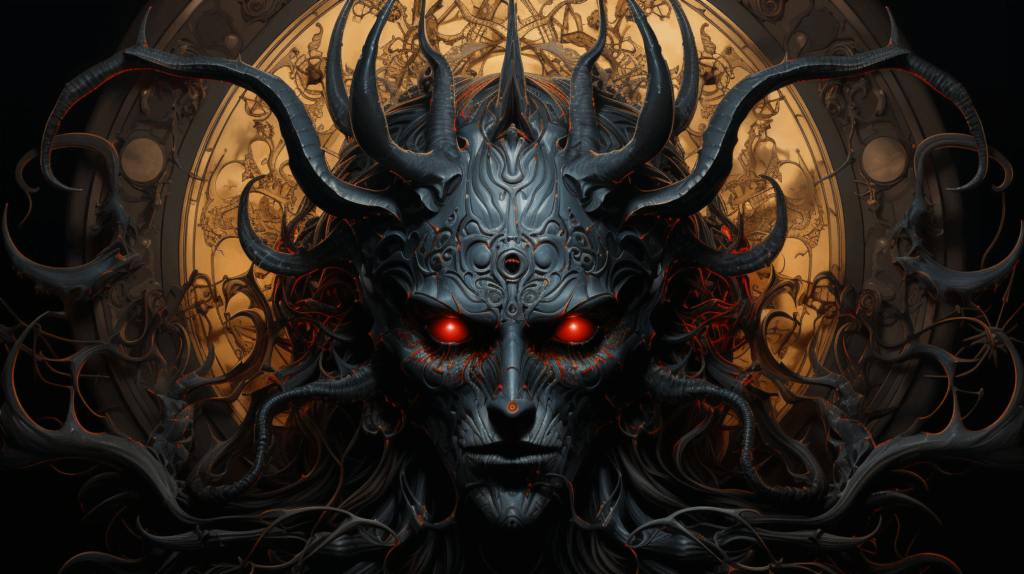
Beyond the realm of psychology, the concept of personal demons has also been a recurring theme in various philosophies. By examining how different philosophical schools interpret these internal struggles, we can gain a broader perspective on our journey towards self-mastery. In this chapter, we’ll focus on the concept of “demons” in existentialism, stoicism, and other philosophical schools.
Existentialism and Personal Demons
Existentialism, a philosophical movement that emphasizes individual existence, freedom, and choice, provides a unique lens to view our personal demons. Existentialists like Søren Kierkegaard and Jean-Paul Sartre considered the feelings of anxiety, dread, and despair, not as pathological, but as essential aspects of human existence. They viewed these feelings as a natural response to the fundamental uncertainties of life and the freedom to shape our destiny.
In existentialism, our personal demons might arise from the “existential angst” we experience when confronted with life’s inherent uncertainties, the inevitability of death, and the freedom and responsibility of defining our life’s meaning. Facing these demons, then, involves acknowledging these existential realities and exercising our freedom responsibly to create a life of authenticity and personal significance.
Stoicism and Personal Demons
Stoicism, an ancient philosophy founded in Athens by Zeno of Citium, teaches us to differentiate between what is within our control and what isn’t. Stoics believed that peace comes from focusing on what we can control—namely our judgments, desires, and actions—and accepting what we cannot control.
In the context of stoicism, our personal demons might be seen as misguided judgments or unregulated desires that disturb our inner peace. Stoics would suggest facing these demons by realigning our values and responses to reflect what’s genuinely significant and under our control.
Other Philosophical Schools and Personal Demons
Various other philosophical traditions also address the concept of personal demons. In Buddhism, for example, the notion of “Mara” represents similar inner obstacles. Mara embodies desire, death, and the illusion of self, symbolizing the internal struggles that one must overcome to attain enlightenment.
Similarly, in Taoism, an ancient Chinese philosophy, the path to harmony or ‘the Tao’ involves a balance between opposing forces (Yin and Yang). Personal demons might arise when these forces are out of balance, leading to disharmony in oneself. The process of overcoming these demons involves striving for balance and flow in our actions and life.
Exploring the concept of personal demons through these philosophical lenses enriches our understanding and gives us diverse strategies to approach them. In the next chapters, we’ll dive into esoteric interpretations of our internal struggles and discuss practical methods to confront and integrate these personal demons on our path to self-mastery.
Chapter 5:
Demons in Esotericism
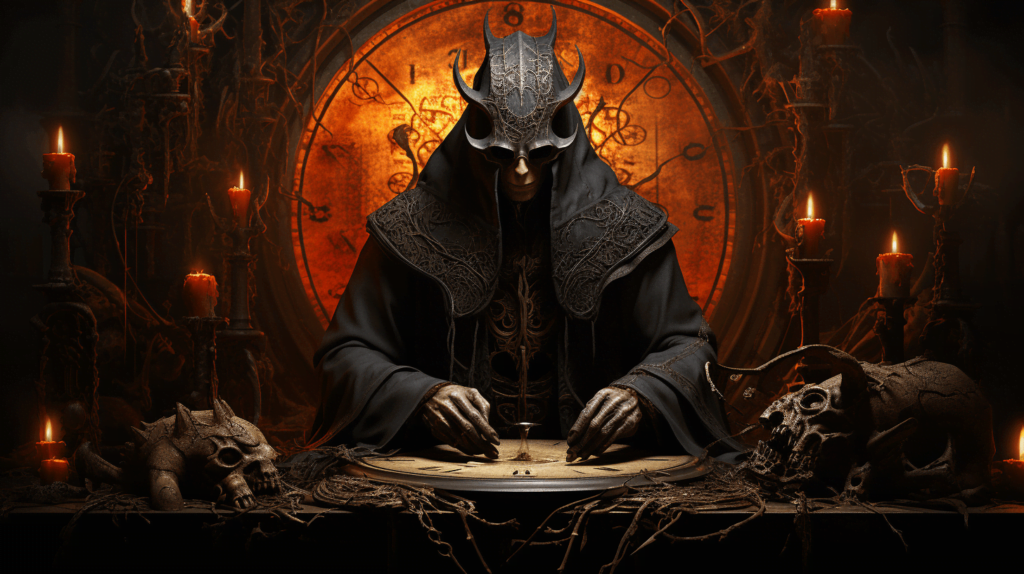
Esoteric traditions provide a mystical and symbolic perspective on personal demons, presenting a unique approach to understanding and integrating these internal struggles. Let’s delve into how these traditions interpret personal demons and the alchemical symbolism related to self-transformation.
Personal Demons in Esotericism
Esoteric traditions are characterized by their focus on inner knowledge or ‘gnosis.’ Esotericism often uses symbolism and allegory to describe complex spiritual concepts and internal processes.
In many esoteric traditions, ‘demons’ are seen as aspects of the self that are not yet integrated into the whole. They represent energies, emotions, or thoughts that have been denied or suppressed, functioning as shadow elements of the psyche. These traditions emphasize the necessity of acknowledging, understanding, and integrating these aspects to achieve spiritual wholeness.
Personal Demons in Hermeticism
Hermeticism, an ancient philosophical and spiritual tradition attributed to Hermes Trismegistus, employs principles such as “As above, so below” and “As within, so without” to explain the interconnectedness of the universe. Hermeticism teaches that our inner state reflects the outer world, and vice versa.
In a hermetic context, personal demons can be understood as disruptions in our inner microcosm that reflect in our external experiences. To harmonize our outer world, we must first address and resolve these internal disturbances, transforming our demons into sources of wisdom and strength.
Alchemical Symbolism and Self-Transformation
Alchemy, a crucial aspect of hermetic tradition, offers profound symbolism for the process of confronting and transforming our personal demons. The magnum opus, or the Great Work of alchemy, symbolizes the journey from a ‘base’ state to a ‘refined’ or ‘golden’ state, which can be seen as a metaphor for self-mastery.
This transformative process involves stages represented by various elements and colors, including the blackening (nigredo), the whitening (albedo), and the reddening (rubedo). The nigredo corresponds to confronting and acknowledging our shadow or ‘demon.’ The albedo represents the purification or understanding of these aspects. Finally, the rubedo symbolizes the integration and transformation of these elements into a higher state of being.
Esotericism, hermeticism, and alchemy present a different, more symbolic, and intuitive lens to understand our personal demons. They underline the importance of transformation and integration as crucial steps in our journey to self-mastery. As we delve deeper into this journey, we’ll start examining practical strategies to confront and conquer our personal demons, drawing from all the psychological, philosophical, and esoteric insights we’ve gathered so far.
Chapter 6:
The First Step in Facing Your Demons
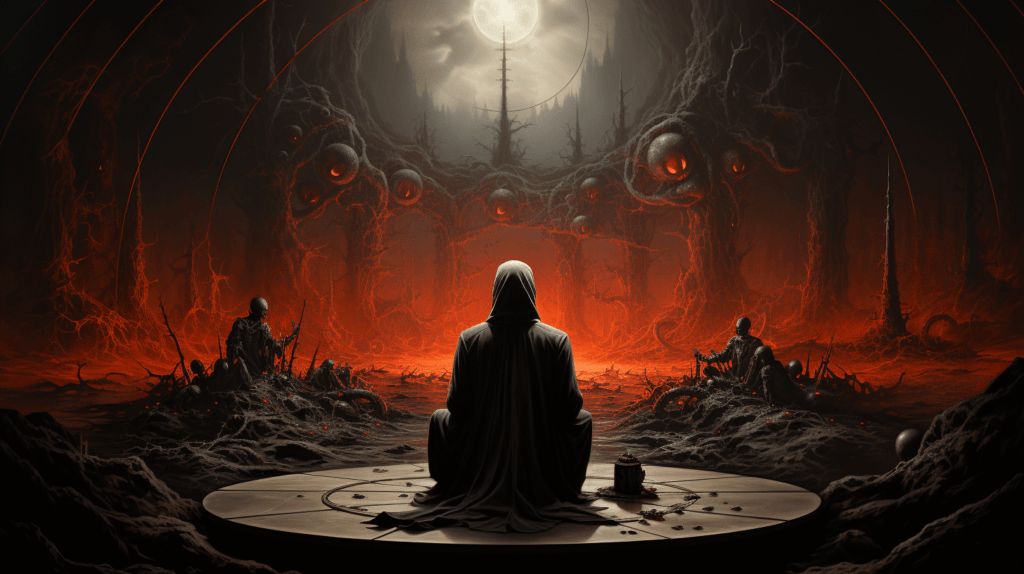
Acceptance is the cornerstone of facing and conquering our personal demons. By acknowledging and accepting their presence, we can begin to understand them and start our journey towards transformation. This chapter will explore the significance of this acceptance and provide exercises to cultivate self-awareness and acceptance.
The Importance of Acknowledging and Accepting Your Demons
Denial is often our initial response when we come face-to-face with our personal demons. We might ignore, suppress, or rationalize these challenging aspects of our psyche to maintain a comfortable status quo. However, such avoidance only gives these demons more power over us, and they continue to influence our behaviors and emotions from the shadows.
Acceptance is the antidote to this denial. By acknowledging our personal demons, we bring them into the light of our conscious awareness. This process doesn’t mean we condone or agree with these aspects. Instead, it’s about recognizing their existence and understanding their impact on our lives.
Once we’ve acknowledged these demons, we can start to accept them. Acceptance is about fully embracing all parts of ourselves, even the ones we’re uncomfortable with. It allows us to see ourselves in a truthful, holistic light and paves the way for understanding, transformation, and self-mastery.
Exercises for Self-Awareness and Acceptance
1. Self-Reflection and Journaling:
Regular self-reflection can help identify recurring patterns, reactions, and feelings that might point towards your personal demons. Journaling these reflections can provide further insight and clarity. Make it a habit to note down your feelings, reactions, and thoughts, especially those that provoke strong emotional responses.
2. Mindfulness and Meditation:
Practices like mindfulness and meditation foster a non-judgmental awareness of the present moment, helping us notice our thoughts and emotions without immediately reacting to them. Through these practices, we can become more attuned to our internal landscape and better identify and accept our personal demons.
3. Shadow Work:
This involves directly engaging with our shadow aspects or ‘demons.’ It could be through various techniques like dialogue writing, where you converse with your shadow, or active imagination, a method introduced by Carl Jung, where you interact with your unconscious in a dream-like state. Shadow work should be done carefully, preferably with the guidance of a professional, as it can bring up intense emotions.
4. Body Awareness Exercises:
Our bodies often hold emotional memories and patterns that our conscious mind might not be immediately aware of. Techniques like yoga, mindful movement, or body scans can help us connect with these embodied emotions and recognize the physical manifestation of our personal demons.
Remember, acceptance is not a one-time event but a continuous practice. It’s about consistently returning to a space of openness and willingness to engage with all parts of ourselves. As we deepen this practice of acceptance, we strengthen our foundation for the transformative journey that lies ahead.
Chapter 7:
Mindfulness and Meditation: Tools for Understanding

Mindfulness and meditation are powerful tools for exploring and understanding our personal demons. They foster a non-judgmental awareness of our thoughts, emotions, and behaviors, allowing us to explore our internal landscape with compassion and curiosity. This chapter will delve into how we can utilize mindfulness and meditation for this exploration and offer practical exercises and techniques.
Using Mindfulness and Meditation to Explore Your Demons
Mindfulness is the practice of being fully present in the moment, paying attention to our experiences in a non-judgmental way. It allows us to observe our thoughts and feelings without getting entangled in them. This observational stance helps us identify and understand our personal demons more clearly, as we learn to see them as transient mental states rather than defining aspects of our identity.
Meditation, often used as a tool to cultivate mindfulness, is a practice of focused attention that brings clarity and calm. In the context of personal demons, meditation can provide a safe and structured space to explore these challenging aspects. It can help us disentangle from reactive thought patterns and connect with a deeper sense of self beyond our fleeting thoughts and emotions.
Practical Meditation Exercises and Mindfulness Techniques
1. Mindfulness Meditation:
This is a basic meditation practice that cultivates present-moment awareness. Find a quiet and comfortable space, close your eyes, and focus on your breath. Notice its natural rhythm without trying to control it. If your mind wanders, gently bring your attention back to the breath. As you become more attuned to your breath, you might start noticing thoughts, emotions, or sensations that arise. Observe them without judgment and let them pass, returning your focus to the breath.
2. Loving-Kindness Meditation:
This meditation helps foster an attitude of compassion and acceptance towards ourselves, including our personal demons. Begin by focusing on your breath, then slowly start directing loving and kind thoughts towards yourself, like “May I be happy, may I be safe, may I be free from suffering.” Gradually extend these well-wishes to include the challenging aspects of your personality.
3. Mindful Daily Activities:
You can cultivate mindfulness in daily activities as well. Whether you’re eating, walking, washing dishes, or brushing your teeth, try to stay fully present in the moment, paying attention to the sensations, movements, and experiences involved in the activity.
4. Body Scan Meditation:
This practice helps connect with our embodied emotions and sensations, often providing insights into our internal struggles. Begin at one end of your body, like your toes, and slowly move your attention through different parts, noticing any sensations or emotions that arise.
5. Observing Thoughts and Emotions:
This is a mindfulness practice where you create a mental space to observe your thoughts and emotions. Whenever a thought or emotion arises, instead of engaging with it, simply label it as ‘thought’ or ’emotion’ and let it pass. This practice can provide insights into your mental patterns and the nature of your personal demons.
Mindfulness and meditation are transformative tools on our journey to self-mastery. By fostering awareness and understanding, they empower us to face our personal demons with compassion and courage. In the next chapter, we’ll delve into more active strategies to confront and integrate these challenging aspects.
Chapter 8:
The Symbolism of the Confrontation
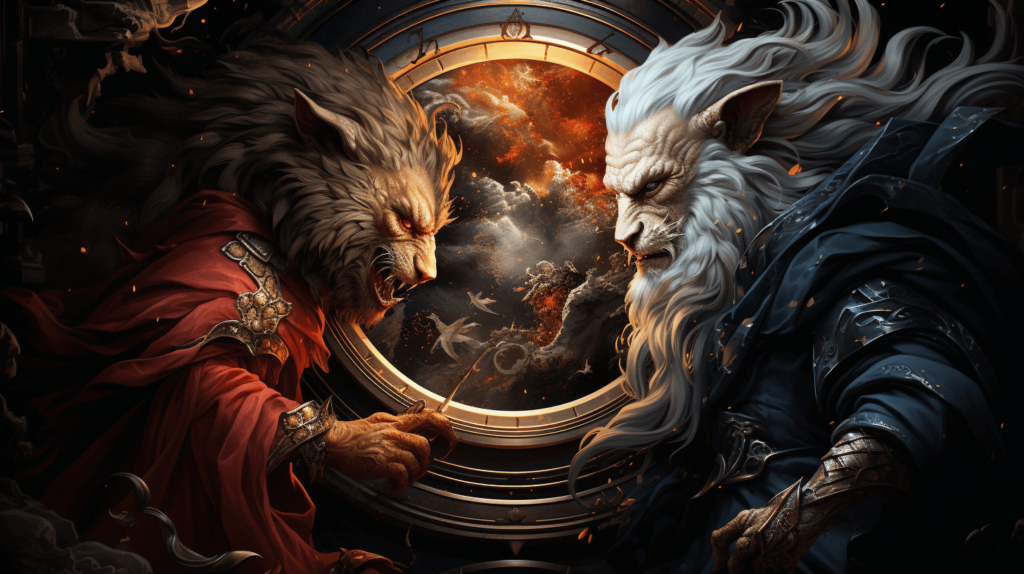
Confrontation, particularly with our shadow or personal demons, is a critical theme in various symbolism and mythologies. It often signifies a transformative turning point in the hero’s journey. This chapter will explore the significance of this confrontation and delve into the stage of ‘Facing the Shadow’ in the hero’s journey.
The Significance of Confrontation in Symbolism and Mythology
Symbolically, confrontation often represents a clash between opposites – light and dark, conscious and unconscious, known and unknown. This struggle is an integral part of many mythologies, folklore, and spiritual traditions, symbolizing a critical juncture in the path of self-discovery and transformation.
In alchemy, confrontation corresponds to the stage of ‘nigredo’ or ‘blackening,’ where the ‘base’ self is faced and broken down to make way for transformation. In Jungian psychology, it aligns with encountering the ‘shadow self,’ the unconscious aspects that the conscious self does not identify with. In both cases, confrontation is a necessary stage that initiates the process of self-integration and wholeness.
Facing the Shadow in the Hero’s Journey
In Joseph Campbell’s monomyth, or the hero’s journey, ‘Facing the Shadow’ or ‘The Ordeal’ is a critical stage. It’s here that the hero must confront their greatest fear or challenge, often symbolizing their own dark, unacknowledged aspects.
The ‘shadow’ in this context is typically represented by a formidable enemy, a beast, or a terrifying situation that the hero must overcome. But beneath this external struggle, there lies an internal one. The hero is essentially facing themselves, their unexplored potentials, their repressed fears, and their untamed desires – their personal demons.
The confrontation is often brutal and painful. It demands the hero to face their fears, acknowledge their flaws, and embrace their full self. Yet, it is through this ordeal that the hero finds their hidden strength, gains profound self-understanding, and undergoes transformative growth. The shadow, once an adversary, becomes an ally and a source of power, marking the hero’s shift towards self-mastery.
Such symbolism serves as a reminder that facing our personal demons is a crucial, albeit challenging, part of our journey towards self-mastery. It’s not a process of defeat or eradication, but of acknowledgment, understanding, and integration. The confrontation, in all its intensity, is a path to self-realization and wholeness. As we move to the next chapter, we will delve into practical strategies for this confrontation and the subsequent integration process.
Chapter 9:
Techniques for Conquering Your Demons

Having understood the significance of confronting our personal demons, the next step is actively engaging in techniques that help us conquer them. These strategies, drawn from various fields, including psychology, philosophy, and esotericism, aim to facilitate our journey of self-mastery. This chapter will provide an overview of some of these techniques.
Psychological Techniques
1. Cognitive-Behavioral Strategies:
Cognitive-behavioral therapy (CBT) focuses on changing unhelpful cognitive distortions and behaviors. Techniques such as cognitive restructuring (identifying and challenging maladaptive thoughts) and behavioral activation (engaging in activities that counteract negative feelings) can be helpful in confronting personal demons.
2. Exposure Therapy:
A form of CBT, exposure therapy, involves gradual and repeated exposure to fears or anxieties, enabling individuals to reduce avoidance and fear responses. This approach can be beneficial in facing fears that might represent or contribute to personal demons.
Philosophical Techniques
1. Stoic Exercises:
Stoicism teaches acceptance of things we cannot control and focus on what we can – our responses and attitudes. Techniques like negative visualization (imagining worst-case scenarios to reduce fear and appreciate what you have) and dichotomy of control (distinguishing between what you can and can’t control) can help in dealing with personal demons.
2. Buddhist Techniques:
Mindfulness meditation, as discussed in previous chapters, is a significant Buddhist practice that helps in understanding and transforming personal demons. Additionally, practices like Metta (loving-kindness meditation) can foster self-compassion, an essential aspect when dealing with personal demons.
Esoteric Techniques
1. Ritual:
Rituals can be a powerful tool for symbolically confronting and transforming personal demons. These could involve symbolic acts like writing down your fears and burning the paper, signifying the release of those fears.
2. Visualization:
Visualization involves creating mental images to influence our psychological state. Visualizing a ‘safe space’ or ‘inner sanctuary’ can provide a supportive environment for confronting personal demons. Alternatively, visualizing your demons and dialoguing with them can offer insights and foster integration.
It’s crucial to note that these techniques should be approached with patience, compassion, and, if possible, under the guidance of a professional. Each individual’s journey with their personal demons is unique, and so the strategies that work might vary. The goal is not to ‘defeat’ these demons, but to understand, accept, and integrate them into our sense of self, fostering growth and self-mastery. As we’ll discuss in the next chapter, the ultimate aim is to transform these challenges into stepping stones towards a fuller, richer understanding of oneself.
Chapter 10:
Alchemical Transformation: Turning Lead into Gold
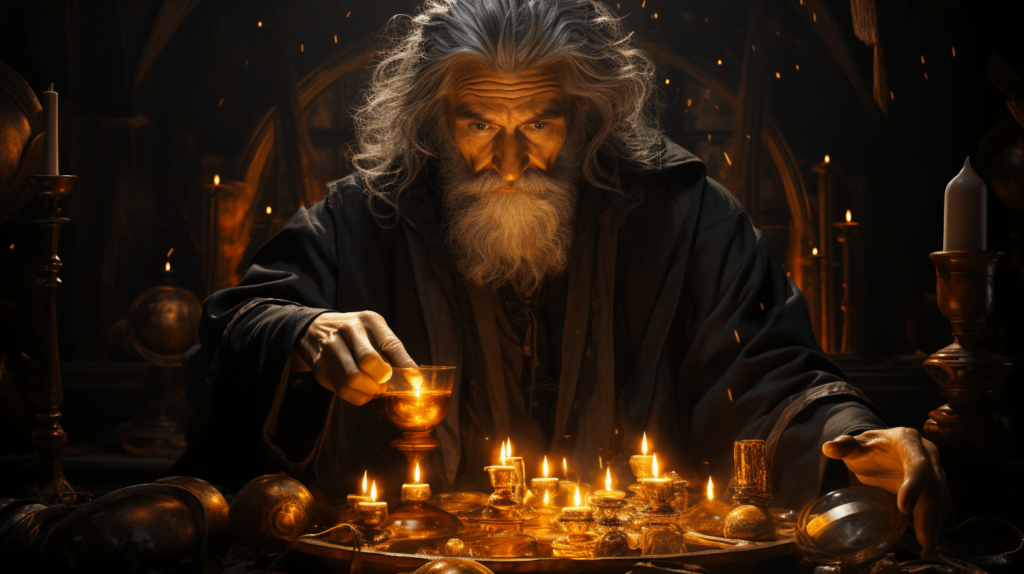
The ancient practice of alchemy, rooted in chemical experimentation and metaphysical philosophy, offers profound insights into personal transformation. Its central concept – turning lead into gold – serves as a symbolic representation of our journey to conquer personal demons. This chapter will delve into the alchemical understanding of transformation and its psychological interpretation.
The Concept of Transformation in Alchemy
At its core, alchemy seeks the transformation of base, impure materials into pure, noble ones – the most famous being the conversion of lead into gold. However, these processes are not just chemical but are imbued with deep symbolism. They serve as metaphors for spiritual and psychological transformation.
In alchemy, ‘lead’ represents the unrefined, base aspects of the self – including our personal demons or ‘shadow’ aspects. The process of turning this ‘lead’ into ‘gold’ signifies the journey of acknowledging, confronting, and transmuting these challenging aspects into a source of wisdom and strength.
This transformation is not a simple, one-step process. Alchemists detail several stages of the work, each representing different aspects of personal transformation. These stages include ‘nigredo’ (blackening), ‘albedo’ (whitening), and ‘rubedo’ (reddening), leading finally to the creation of the ‘Philosopher’s Stone’ – the symbol of ultimate wholeness and integration.
Psychological Interpretation of Alchemical Transformation
Carl Jung, the Swiss psychiatrist, was deeply influenced by alchemy, seeing in it a symbolic representation of individuation – the process of becoming a fully integrated individual. According to Jung, the stages of alchemical transformation align with stages of psychological growth and integration.
The ‘nigredo,’ or blackening stage, corresponds to facing our shadow or personal demons. It is a period of confronting our unconscious, often marked by confusion, despair, and introspection. However, it is through this confrontation that we initiate our transformative journey.
The following stages, ‘albedo’ and ‘rubedo,’ symbolize further processes of purification, illumination, and integration of our unconscious aspects into conscious awareness. They represent the gradual integration and acceptance of our personal demons, leading to greater self-understanding and inner harmony.
The final creation of the ‘Philosopher’s Stone’ symbolizes the achievement of wholeness – a state of self-mastery where our personal demons have been acknowledged, confronted, and transformed into a source of strength and wisdom.
In conclusion, alchemical transformation serves as a rich metaphor for our journey of conquering personal demons. It reminds us that these challenging aspects, much like the ‘lead’ in alchemy, hold the potential for profound transformation and growth. They are not to be rejected but understood, accepted, and integrated – transmuted into our personal ‘gold.’ In the following chapter, we will discuss the aftermath of this transformative process – the emergence of the self-mastered individual.
Chapter 11:
The Hero’s Journey: Return with the Elixir

In the context of the hero’s journey, our efforts to confront and transform our personal demons culminate in a triumphant return, often symbolized by ‘returning with the elixir.’ This stage signifies the integration of the shadow and the realization of our full potential. This chapter will apply these final stages of the hero’s journey to personal transformation and explore the concepts of shadow integration and self-actualization.
Application of the Final Stages of the Hero’s Journey to Personal Transformation
In Joseph Campbell’s monomyth or hero’s journey, the hero, having faced and overcome their greatest fears (the ordeal), emerges transformed, carrying an ‘elixir,’ a treasure, or a newfound knowledge. This elixir symbolizes the wisdom gained through the struggle, the integration of the shadow, and the newfound balance and harmony within the self.
The hero then returns to their original world but as a changed person. They’re wiser, more balanced, and possess a new understanding of themselves and the world around them. They’ve not just survived the ordeal but have transformed it into a source of strength. In terms of personal transformation, this return represents the stage of self-actualization.
Understanding Shadow Integration and Self-Actualization
Shadow integration, a concept from Jungian psychology, refers to the process of acknowledging, understanding, and accepting our darker, unconscious aspects (our personal demons). Rather than rejecting these parts, we integrate them into our conscious self, realizing they are a part of us. This process promotes inner harmony, self-acceptance, and authenticity.
Self-actualization, a term coined by psychologist Abraham Maslow, represents the realization of one’s full potential. It is the ultimate stage of psychological development, where individuals are not driven by deficiencies (e.g., unmet needs, insecurities) but by growth, fulfillment, and personal exploration. Maslow described self-actualized individuals as more accepting of themselves and others, more spontaneous and comfortable with solitude, and having a clear perception of reality.
In the context of our journey, self-actualization aligns with the hero’s triumphant return. Having confronted and integrated our personal demons, we return to our daily life, not as the same person, but as a self-actualized individual. We have a greater understanding of our true selves, a more profound acceptance of our imperfections, and a more authentic way of being.
The elixir we bring back from our heroic journey is the wisdom and strength gleaned from our ordeals. Our personal demons, once a source of fear and resistance, now serve as catalysts for our personal growth and self-understanding. Through the process of shadow integration, we’ve not just faced our demons, but we’ve transformed them, and in doing so, transformed ourselves. In the concluding chapter, we will reflect on this journey and consider the continual journey of self-mastery.
Chapter 12:
Living a Conquered Life: Maintaining Self-Mastery

Having confronted, understood, and integrated our personal demons, we’ve stepped onto the path of self-mastery. This final chapter explores how we can maintain this state of self-mastery and continue living a ‘conquered’ life – a life where we’ve turned our personal challenges into opportunities for growth.
Practices for Maintaining Self-Mastery
Self-mastery isn’t a destination but a journey. Maintaining it requires continuous effort, reflection, and adjustment. Here are a few practices that can support this ongoing process:
1. Mindfulness:
As we’ve explored in previous chapters, mindfulness helps us stay connected with our present-moment experience, keeping us aware of our thoughts, emotions, and responses.
2. Continual Self-reflection:
Regular self-reflection helps us maintain self-awareness, identify areas for growth, and ensure we’re living in alignment with our values.
3. Emotional Regulation:
Techniques such as cognitive reframing, emotion-focused coping, and relaxation exercises can help us manage our emotional responses effectively.
4. Maintaining Physical Health:
Regular exercise, a balanced diet, and adequate sleep are crucial for overall well-being and psychological resilience.
5. Seeking Support:
Don’t hesitate to seek help when needed. This could be from trusted friends, family, or professionals like therapists or counselors. Remember, seeking support isn’t a sign of weakness but a part of self-mastery.
Living the Conquered Life
Living a ‘conquered’ life doesn’t mean a life devoid of challenges or struggles. Instead, it means living with a deep understanding and acceptance of oneself, including one’s personal demons. It signifies a life where challenges are viewed not as insurmountable obstacles but as opportunities for growth and self-understanding.
In a ‘conquered’ life, our personal demons, once sources of fear and resistance, have transformed into sources of wisdom and strength. Through the process of acknowledging, confronting, and integrating these aspects, we’ve gained a deeper understanding of ourselves and our potentials. We’ve become the heroes of our own journeys, having returned with the elixir of self-mastery.
Living this life requires continuous effort. The process of self-mastery isn’t linear and might involve revisiting previous stages or facing new personal demons. But with the tools and understanding you’ve gained, you’re equipped to navigate this journey. And remember, every step, every challenge, is a part of your unique path towards becoming your best self.
In conclusion, conquering your demons isn’t a battle but a journey of acceptance, understanding, and transformation. It’s a journey towards self-mastery, self-actualization, and ultimately, towards living a fuller, more authentic life. It’s a journey worth undertaking.
Chapter 13:
Strategies for Maintaining Growth and Transformation
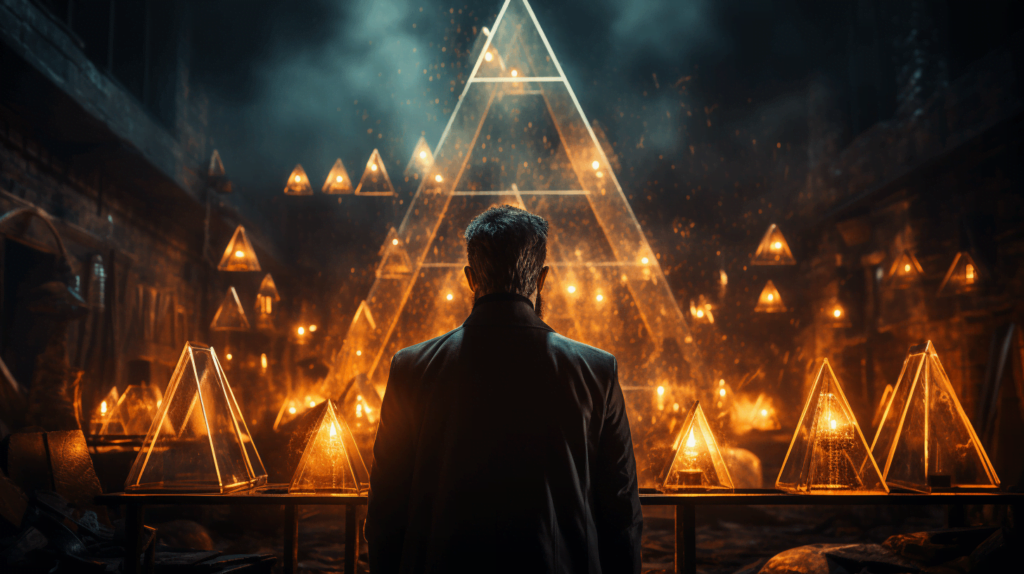
With the journey of self-mastery set into motion, the focus now shifts towards nurturing and sustaining this personal growth and transformation. The path to self-mastery doesn’t end with the conquest of a single set of demons. Instead, it involves a continuous process of growth, exploration, and self-improvement. This chapter lays out several strategies that can aid in maintaining and facilitating further growth and transformation.
Continual Learning and Self-Education
A self-mastered individual recognizes the value of lifelong learning. Continual learning not only expands your knowledge and understanding of the world but also fosters intellectual curiosity, cognitive flexibility, and open-mindedness. This can involve reading widely, pursuing further education, or simply staying curious about life and the world around you.
Setting New Goals
Self-mastery involves an ongoing journey of self-improvement and actualization. As such, continually setting new personal and professional goals is crucial. These goals provide a sense of direction and purpose, keep you motivated, and ensure you are continually pushing the boundaries of your comfort zone.
Cultivating Resilience
The journey towards self-mastery is not always smooth. You will inevitably encounter setbacks, obstacles, and perhaps new personal demons. Cultivating resilience – the capacity to recover quickly from difficulties – can help you navigate these challenges effectively. This can involve practices such as positive thinking, stress management, maintaining a supportive social network, and looking after your physical health.
Embracing Change
Growth and transformation are inherently about change, and embracing this change is integral to maintaining your progress. This involves being open to new experiences, adaptable in the face of changing circumstances, and willing to let go of old patterns of behavior that no longer serve your growth.
Maintaining Self-Awareness
As you continue to grow and evolve, maintaining self-awareness is crucial. Regular self-reflection and introspection can help you stay connected with your evolving self, keep track of your progress, and identify areas for further growth and development.
Prioritizing Self-Care
Last but not least, self-care is a crucial part of maintaining growth and transformation. This can involve taking care of your physical health, ensuring you have regular time for relaxation and leisure, maintaining healthy relationships, and looking after your mental and emotional wellbeing.
Remember, maintaining growth and transformation is a lifelong journey, not a destination. It requires patience, persistence, and self-compassion. However, with these strategies, you will be well-equipped to continue on your path towards self-mastery and self-actualization, living a life of authenticity, fulfillment, and personal growth.
Chapter 14:
Living Consciously with Integrated “Demons”
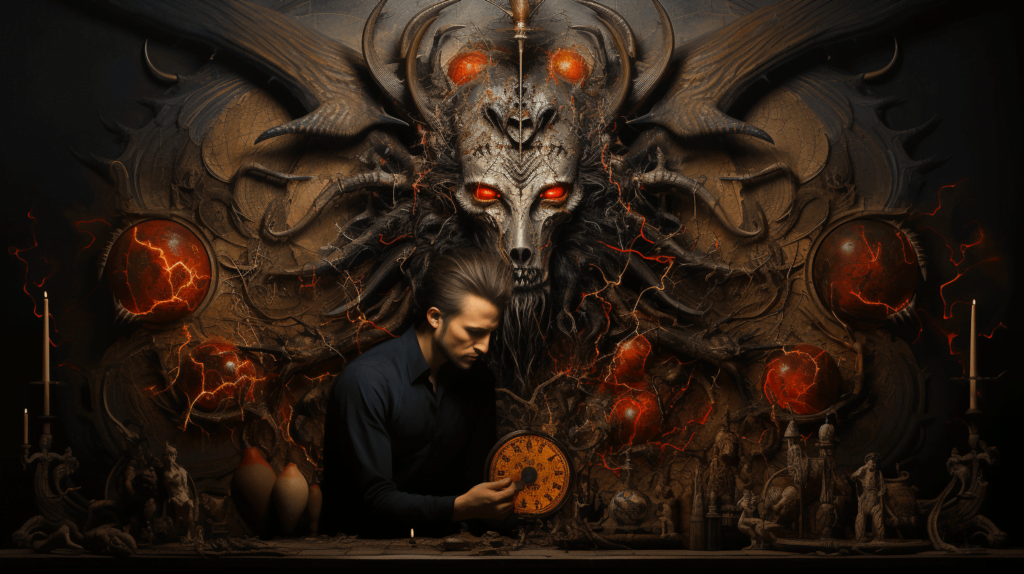
Having faced and integrated our personal “demons,” we’re now equipped with deeper self-understanding, resilience, and inner strength. However, living consciously with these integrated aspects requires ongoing self-awareness, acceptance, and growth. This chapter explores what it means to live consciously with our integrated “demons” and how this informs our journey towards continued self-mastery.
Understanding Integration
Integration doesn’t mean that our “demons” – our fears, insecurities, and challenges – suddenly disappear. Instead, integration means these aspects have been acknowledged, understood, and accepted as part of our selves. They no longer control us unconsciously; instead, they become conscious aspects that can inform our growth and self-understanding.
Our integrated “demons” become like old scars – reminders of past struggles but also symbols of our resilience and capacity for transformation.
Living Consciously
Living consciously means living with awareness, intention, and authenticity. It involves staying connected with our thoughts, emotions, and behaviors, and aligning our actions with our values, goals, and true selves.
With our “demons” now integrated, they become part of our conscious awareness. We understand their origins, triggers, and patterns, and we’ve developed strategies to manage them effectively. They no longer push us around unconsciously; instead, we can consciously choose how to respond to them.
Strategies for Conscious Living
1. Mindfulness and Presence:
Practice being fully present in the here and now. This keeps you connected with your current experiences, including any feelings, thoughts, or tendencies related to your integrated “demons.”
2. Regular Self-reflection:
Regularly reflect on your experiences, responses, and feelings. This can help maintain awareness of your integrated aspects and identify any new areas for growth or exploration.
3. Continued Learning and Growth:
Stay open to learning and growth. Your understanding of your “demons” and yourself can always deepen, and new challenges can bring new opportunities for personal development.
4. Self-Compassion:
Treat yourself with kindness, understanding, and patience. Living with your integrated “demons” isn’t always easy, but self-compassion can make the journey smoother and more fulfilling.
Living consciously with our integrated “demons” represents a new stage in our self-mastery journey. It’s a stage marked by self-awareness, acceptance, and ongoing growth. It’s a stage where our past struggles become a source of strength, resilience, and wisdom, shaping us into more authentic, self-mastered individuals. As we conclude our journey, remember that self-mastery isn’t a destination, but a continuous, rewarding journey of self-exploration, self-understanding, and self-transformation.
Chapter 15:
The Continuous Journey

As we approach the end of this book, it’s important to emphasize that the path to self-mastery is not a linear journey with a definitive endpoint. Instead, it’s a continuous spiral, where each cycle brings new challenges, revelations, and opportunities for growth. Each confrontation with our personal “demons”, each moment of acceptance, every instance of transformation is a step towards a deeper understanding of our authentic selves.
The Spiral of Self-Mastery
The path of self-mastery is more like a spiral than a straight line. As we grow and evolve, we may find ourselves revisiting old challenges or uncovering new layers of our “demons”. Each cycle is an opportunity to deepen our self-understanding, refine our strategies, and strengthen our resilience.
Growth through Challenges
Each confrontation with a personal “demon”, be it fear, insecurity, or any psychological struggle, is an opportunity for growth. As we’ve seen throughout this book, these confrontations can lead to significant personal transformation. They can deepen our self-understanding, expand our consciousness, and enhance our capacity for resilience and adaptability.
The Journey Continues
Remember, self-mastery is not about achieving a state of perfection or completely eliminating our personal “demons”. Instead, it’s about continuously striving towards authenticity, self-understanding, and self-actualization. It’s about learning to live consciously with our integrated “demons”, using the wisdom gleaned from past struggles to navigate future challenges.
The Reward of the Journey
The reward of this journey is not just the reduction of suffering or overcoming specific challenges. It’s the rich tapestry of self-understanding and personal growth that we weave along the way. It’s the transformation from being unconsciously driven by our “demons” to consciously directing our own lives. It’s the capacity to live authentically, freely, and fully.
In conclusion, the journey of self-mastery, while challenging, is ultimately rewarding. It equips us with the tools and insights to navigate life’s challenges with grace, resilience, and wisdom. It empowers us to live our lives authentically, consciously, and fully.
Thank you for joining this journey towards self-mastery. Here’s to continuous growth, transformation, and the courage to stare down your demons and conquer them!
Epilogue:
Emphasizing the Ongoing Nature of Self-Discovery and Self-Mastery
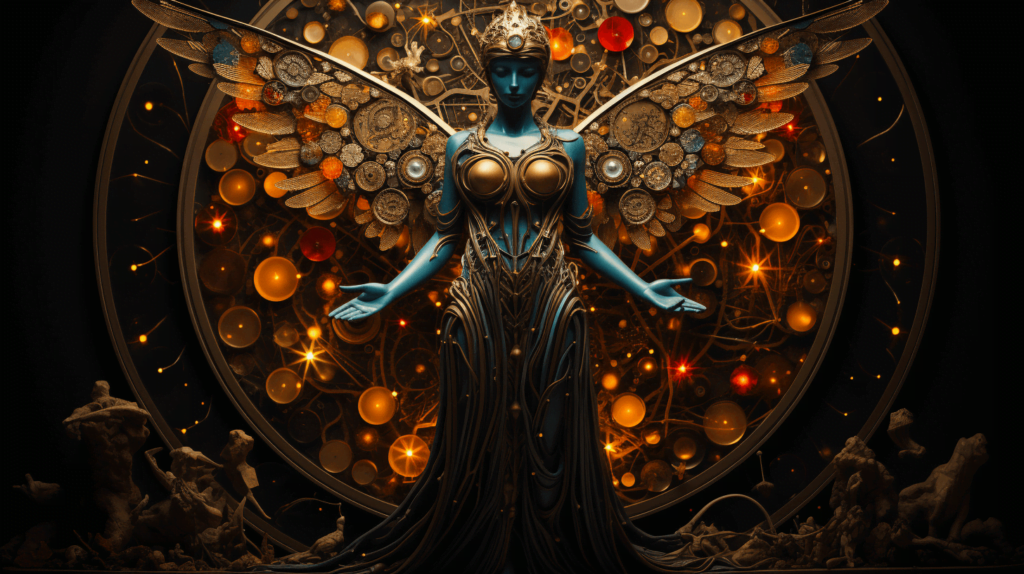
As we close the final chapter of this book, it’s essential to leave you with the understanding that self-discovery and self-mastery are not finite processes. They are perpetual journeys that require continuous exploration, introspection, and effort.
An Ever-Evolving Self
Our ‘self’ is not a static entity. It’s a dynamic, evolving amalgamation of our experiences, thoughts, emotions, relationships, and so much more. As such, self-discovery is an ongoing process. As we continue to navigate through life, we will undoubtedly face new experiences and challenges that reveal different facets of our self, requiring us to revisit, revise, and refine our understanding.
The Fluidity of Self-Mastery
Similarly, self-mastery is not a final destination but a continually shifting goal post. Each stage of growth and each hurdle overcome merely sets the stage for the next level of development. The tools, strategies, and insights you’ve gained throughout your journey will need to be adapted and applied to new contexts as you continue to grow.
The Cycle of Confrontation and Integration
Confronting and integrating our personal “demons” is also a cyclical process. New challenges and circumstances may bring to light previously unrecognized “demons”, demanding us to repeat the cycle of confrontation and integration. However, with each cycle, our capacity for self-understanding, self-acceptance, and self-mastery strengthens, enabling us to navigate these cycles with increasing skill and grace.
The Power of Perseverance
The key to navigating the ongoing journey of self-discovery and self-mastery lies in perseverance. There will be times when the journey is challenging, and progress seems slow or nonexistent. However, every step, no matter how small, contributes to your overall growth and self-understanding.
Remember to celebrate your progress and acknowledge the strength it takes to engage in this journey of self-discovery and self-mastery. Be patient with yourself and extend to yourself the same compassion and understanding that you would offer to others.
In conclusion, self-discovery and self-mastery are ongoing, life-long journeys. They are part and parcel of the human experience and intrinsic to our personal growth and development. Embrace these journeys with an open heart and a curious mind, and remember that the path to self-mastery is not a straight line but a winding road filled with opportunities for growth, transformation, and deepening self-understanding.
Your journey doesn’t end with the last page of this book; rather, it continues with renewed vigor and insight. May the wisdom and strategies you’ve gleaned guide you as you continue this rewarding journey of self-discovery and self-mastery.
Afterword:
Encouragement for Your Continued Journey

As you move forward, navigating the vast and ever-changing landscape of your inner world, remember that you are not alone on this journey. Each one of us is on a similar path, wrestling with our own “demons”, discovering our unique strengths, and striving for self-mastery. Though the journey is deeply personal, it is also universally human.
Value Each Step
Each step you take on this path, no matter how small, is a victory. Remember to honor your progress. Celebrate the milestones, no matter how small they may seem. Each moment of self-awareness, each confrontation with a personal “demon”, each act of acceptance – these are all significant achievements on your journey towards self-mastery.
Compassion and Patience
Remember to extend compassion and patience towards yourself. It’s normal to face setbacks, to stumble, to feel lost at times. These moments do not define your journey; rather, they’re part of it. When you meet challenges, respond with kindness and understanding, not harsh self-judgment. After all, growth is a process, and it often comes packaged with discomfort and difficulties.
Stay Curious and Open
As you continue your journey, keep the flame of curiosity alive. Be open to new perspectives, insights, and experiences. Welcome them as valuable contributors to your growth and understanding. Your openness and curiosity will be your guides, helping you to explore and navigate the rich landscape of your inner world.
Find Support
Remember, you don’t have to walk this path alone. Reach out to supportive friends, mentors, or professionals who can offer guidance and perspective. Engage in conversations, join relevant communities, and don’t hesitate to seek help when you need it.
Above all, trust in your ability to grow, to change, and to master your inner world. You are capable of remarkable transformations, of turning lead into gold, as the alchemists would say. This book may end here, but your journey does not. It continues with each breath you take, with each moment you live.
Thank you for sharing part of your journey with us. We hope that the concepts, strategies, and insights offered in this book serve as valuable companions as you continue your path towards self-mastery. Keep staring down your demons, keep conquering them, and keep growing. Here’s to your journey, and here’s to the incredible person you are becoming.
The Personal Odyssey

In the realm of mind, where shadows often dwell,
Lies a path of self-mastery, a personal tale to tell.
A journey of courage, where only brave hearts tread,
To stare down lurking demons, where others fear to tread.
These demons, they are facets, of our complex self,
Echoes of our past, our fears and struggles, kept on a shelf.
In psychology and philosophy, their origins we find,
In the labyrinth of the unconscious, they’re intertwined.
In esoteric wisdom and hermetic thought, they hold a place,
Symbolic representations of the self, in alchemical space.
In confronting these specters, understanding is the key,
For to master oneself, we must first see what’s there to see.
Mindfulness and meditation, are tools we learn to wield,
In the battlefield of self-discovery, they serve as our shield.
Through the lens of symbolism, the hero’s journey unfolds,
The story of our transformation, in ancient wisdom, it holds.
The battle, the struggle, the victorious cheer,
In conquering our demons, we overcome fear.
But this is not an end, it’s but a new threshold,
Our transformation like alchemy, turning lead into gold.
The journey continues, in constant ebb and flow,
Self-mastery is not a destination, but a way to grow.
Living consciously with our demons, the task is indeed vast,
But the reward is a life, where we are free at last.
So march on, brave traveler, with a heart full of yearn,
Remember, each step taken is a lesson learned.
Your path is unique, a journey of your own,
Keep staring down your demons, and see how you have grown.
In this ongoing voyage of self-discovery and might,
Remember, it’s in darkness, we often find our light.
So here’s to your journey, may it be brave and bold,
A tale of self-mastery, waiting to unfold.

